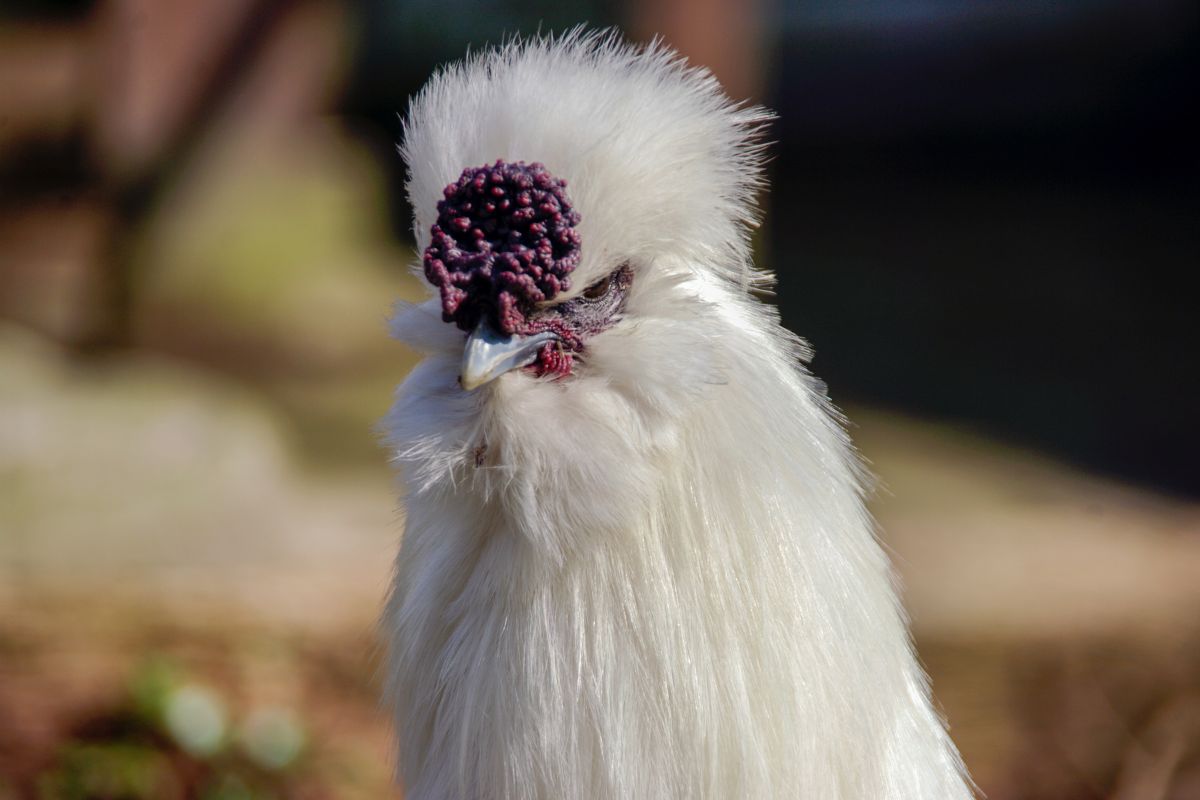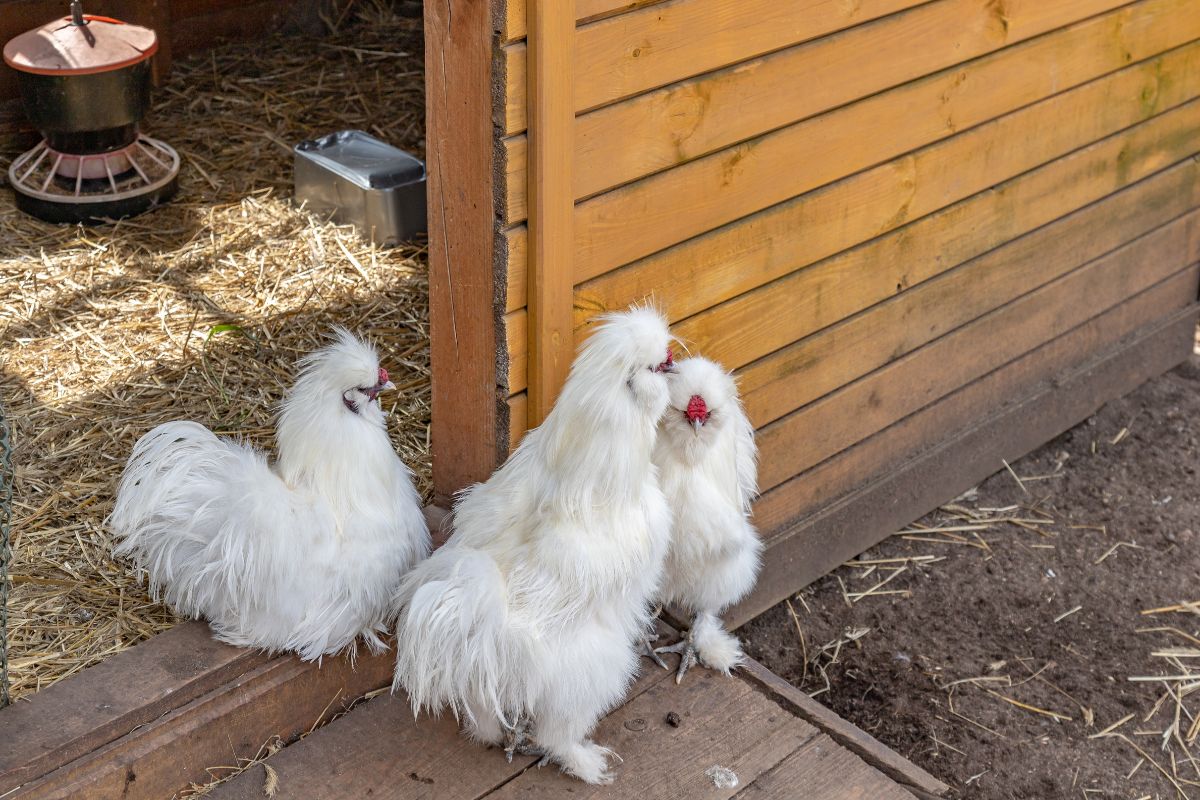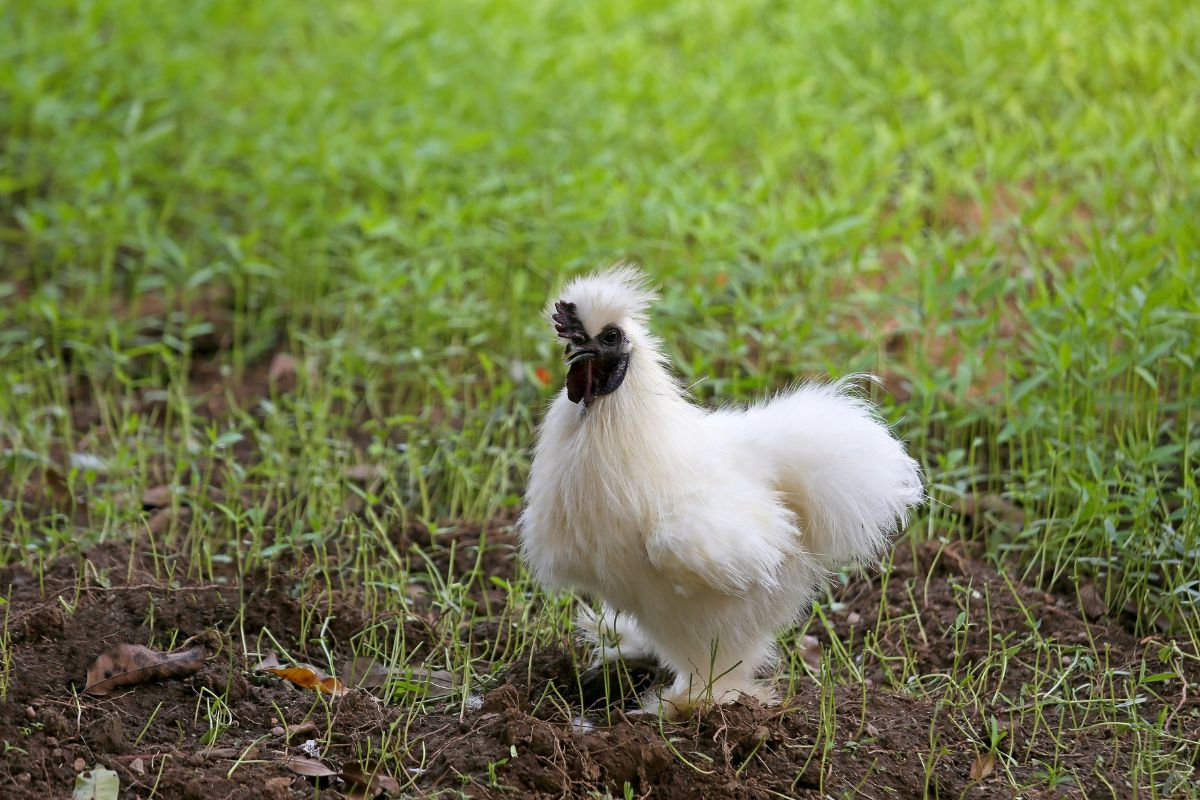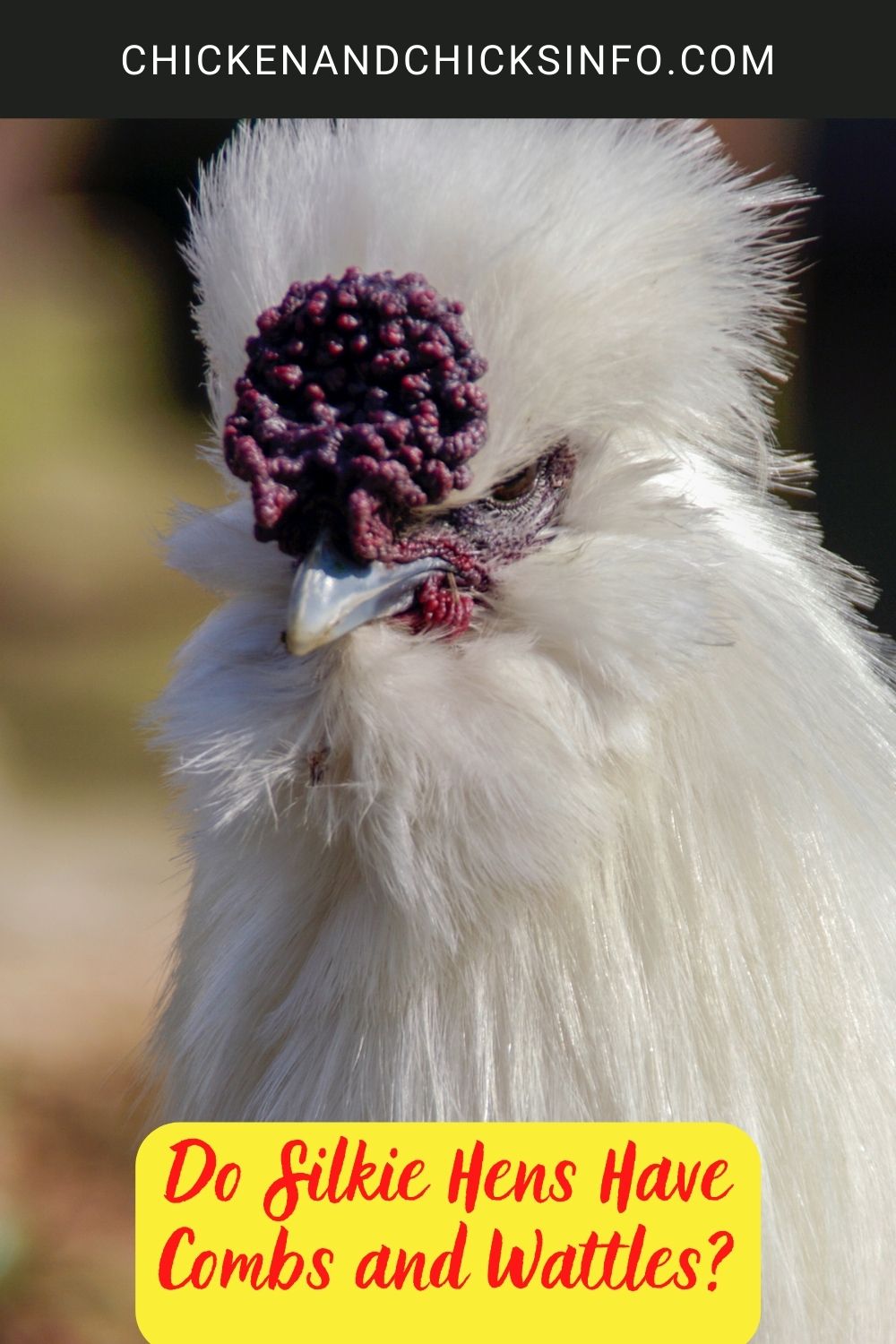
Silkie hens do have combs and wattles, yes. They are usually dark purple-black, sometimes blend in with the color of their skin or are covered by feathers, but they are there if you look!
Jump to:
What Kind of Comb Does a Silkie Chicken Have?
Silkies are listed as having a “walnut” shaped comb. If you’re familiar with what a walnut shell looks like - which I’m sure you are - this will make perfect sense.
Their combs vary greatly though. You’ll see small combs, large combs, round-shaped, etc.
How Can You Tell If a Silkie Is Male or Female by Their Comb?

Females tend to have more of a “V” shape comb. While the males have larger, more rounded combs.
Males usually start to develop combs sooner than females too. Silkies are notoriously hard to sex from an early age. If you have a brood, however, the males will almost certainly start to develop their combs first.
Their combs will almost always be larger when fully developed too. I say “almost” because there are always exceptions, which just further adds to the difficult task of sexing Silkies.
Do Chickens Have Feelings in Their Combs?
Absolutely, have you ever tried to touch their comb?
They don’t like it.
At least, that’s my experience. It seems to be sensitive to touch for most chickens, and with Silkies having large walnut-shaped combs, they don’t want people poking it!
Related - Want to know when Silkies lay eggs and how many per year?
Do Silkie Hens Have Wattles?
Yes, they do. Silkies have wattles just the same as other chickens.
Again, the most iconic wattles for Skilikes are the black or dark purples color ones that I’m sure you’ve seen on white-feathered birds.
They vary in size. Typically, much like combs, the males will have larger wattles.
The most striking thing about Silkies is their bright neon blue earlobes that some of them have.
Why Do Silkies Have Combs and Wattles?

This is an age-old question that people have been asking, trying to figure out for sure, and testing for a long time.
There are a few sensible guesses that are backed somewhat by science.
The first is that chickens use their combs and wattles as a way to better regulate their body temperature.
As warm blood flows through these thin, dangly, fleshy external parts of their bodies it’s cooled by the air around them.
I subscribe to this theory. Not only does it make perfect sense, but I’ve seen how chickens with much larger combs and wattles handle the warmer weather better.
The downside is that larger combs are more susceptible to frostbite in the cold weather. On a red comb, the first indication of frostbite would be black bits at the extremities. This is much harder to spot on Silkies with black combs.
Another theory is that chickens use their combs to recognize each other or they might play a role in their flock hierarchy.
Roosters with larger combs might even be able to attract mates over roosters with smaller combs. Much like why they have much more colorful plumage than hens.
Related - Signs you have a Silkie rooster.
In Summary - Do Silkie Hens Have Combs?
They do! Hopefully, you now know everything you ever wanted to know about Silkies combs, wattles, and everything in between.
A chickens’ comb is something quite unique to them. They are a little bit like fingerprints, every chicken has a unique comb.
With Silkies being such a unique and interesting looking breed their combs are even more fascinating. That large fleshy walnut-shaped “thing” on their heads can range from grotesque to beautiful.
It’s an important feature too, often revealing if they are suffering from any health issues or being pecked at by other flock members. Keep an eye on their combs and wattles.
Any excuse to add a video with cute Silkies! Enjoy:





